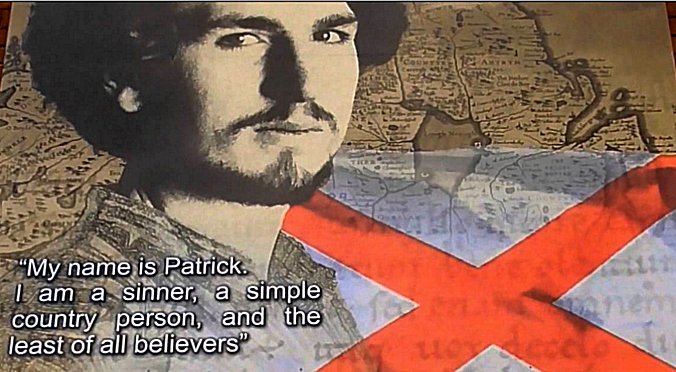It was in Holy Week that our Patrick, leaving Slane, set out for Tara, and, arriving at a plain in sight of the King Laeghaire’s palace, lit the fire designed to celebrate their false goddess. Now, it was one of the laws of the festival that the pagans were then celebrating that, upon this night, the fires should be extinguished on every hearth in Erin, and death was the penalty if anyone kindled his own before the first fire lit by the Druid priests in Tara was seen shining in the darkness of the night.
King Laeghaire saw the sacred fire, and asked who it was that had violated his law.
Infuriated at this, the King of Tara mounted his chariot as the day was breaking and set out to meet Patrick, at the same time declaring his determination to put him to death. When Laeghaire came in sight of St. Patrick and his companions, he was warned by his false priests not to go near the fire but to send for Patrick, and orders were given that no one should rise up to meet him.
The servant of God was not slow in answering the King’s summons. As he drew near he sang the Psalm, “Some trust in chariots, and some in horses; but we will call on the name of the Lord our God.”
The royal party had dismounted, and, in the words of St. Evin, “they were before him, and the rims of their shields against their chins. But none of them rose up before him, except one man alone, who came forth as a figure from God, i.e., Erc, son of Dega. … Patrick blessed him, and he believed in God.” This was the first victory of St. Patrick on the Hill of Slane.
In the contest that followed, the Saint’s chief antagonist was Luchru, one of the heathen priests, who had so deluded the people by his magical arts that they paid him something like divine honors. Before everyone he boasted that he had power to ascend to heaven. Then, in the sight of all, he arose from the earth. Some account say Patrick prayed and the Druid priest fell dead.
Seeing this, the King and his people became maddened, rose against the Saint and made an attempt on his life. But he drew the sword of the Word and intoned the Psalm, “Let God arise, and let His enemies be scattered, and let them that hate Him flee before His face.”
In the ensuing chaos, the swords of the pagans were turned against each other. The Queen, who was present, was won to the faith. This victory thus ended the first day of Patrick’s struggle at the Hill of Slane at Tara.
King Laeghaire, amazed but still unsubordinated, dissimulated, and asked the Saint to come to see him at his palace on the next day. Doubtless he thought, like Simon Magus when witnessing the Apostle’s powers, that St. Patrick was no more than a magician and that he could find some way to subdue him. He determined to make another attempt on the Patrick’s life. With this purpose he posted men on all the roads that led from Slane to Tara.
On Resurrection Sunday, St. Patrick arrived at Tara, and appeared before the astonished King. The pagans had resumed their festivities. King Laeghaire with his court was at table, probably seeking to drown the terrible recollections of the previous day, when the man of God appeared amongst them.
At this point, it becomes hard to unravel myth from history, but one thing is for sure; by the time it was over, the Kingdom had opened the doors to Christendom, paganism was expelled, and Ireland Christianized.
[Editor’s Note: This in abridged version, edited for brevity and content, taken from Gregory Johnson]











